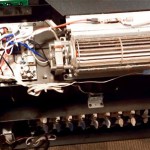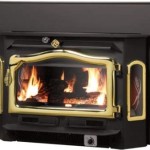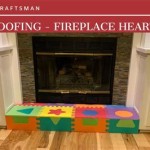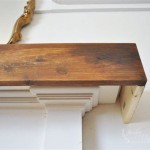Fireplace Inserts: A Guide for Lexington, KY Homeowners
Lexington, Kentucky, experiences a diverse climate, with winters that often necessitate reliable and efficient heating solutions. While traditional fireplaces offer a certain ambiance, they are notoriously inefficient, losing a significant portion of heat up the chimney. Fireplace inserts provide a practical and effective alternative, transforming existing fireplaces into powerful heating appliances. This article explores the various aspects of fireplace inserts relevant to Lexington homeowners, from understanding their benefits and types to choosing the right model and ensuring proper installation.
A fireplace insert is essentially a self-contained heating unit designed to fit inside an existing fireplace opening. These inserts burn wood, gas, or electricity and are significantly more efficient than open fireplaces. They operate as closed combustion systems, meaning the fire is contained within a sealed chamber. This design feature minimizes heat loss and maximizes the amount of heat that radiates into the room. The efficiency gains translate into lower heating bills and a reduced environmental impact.
For homeowners in Lexington, KY, considering a fireplace insert, it's crucial to understand the different types available and their respective advantages and disadvantages. The primary types of fireplace inserts are wood-burning, gas, and electric.
Understanding the Benefits of Fireplace Inserts
The advantages of installing a fireplace insert extend beyond mere heating efficiency. Several key benefits make them a desirable upgrade for Lexington homeowners:
Improved Efficiency: As mentioned earlier, fireplace inserts are far more efficient than traditional fireplaces. Open fireplaces can lose up to 90% of the heat produced, while inserts can achieve efficiencies ranging from 60% to over 80%, depending on the fuel type and model. This translates to significant savings on heating costs, especially during the colder months in Lexington.
Enhanced Safety: Open fireplaces pose safety risks, including the potential for sparks and embers to escape and ignite nearby materials. Fireplace inserts, with their closed combustion systems, significantly reduce these risks. They contain the fire and prevent stray embers from escaping, making them a safer heating option for families with children and pets.
Zone Heating Capability: Fireplace inserts allow homeowners to effectively zone heat their homes. Instead of relying on a central heating system to heat the entire house, the insert can be used to heat the primary living area, providing targeted warmth and reducing energy consumption in unused rooms. This is particularly beneficial in Lexington's older homes, which often have inadequate insulation.
Increased Home Value: A well-maintained and efficient fireplace insert can add value to a home. Potential buyers often appreciate the energy-saving benefits and the aesthetic appeal of a fireplace insert, making it a worthwhile investment for homeowners planning to sell their property in the future.
Reduced Environmental Impact: By burning fuel more efficiently, fireplace inserts reduce the amount of pollutants released into the atmosphere. Wood-burning inserts that meet EPA standards are particularly beneficial in this regard, as they burn wood cleaner and produce less smoke. Gas inserts also offer a cleaner-burning alternative to traditional wood fireplaces.
Exploring Different Types of Fireplace Inserts
Choosing the right type of fireplace insert depends on several factors, including personal preferences, budget, and the existing fireplace setup. Each type offers unique advantages and disadvantages:
Wood-Burning Fireplace Inserts: These inserts burn wood as fuel and provide a classic, traditional fireplace experience. They offer a high heat output and can be a cost-effective heating option if wood is readily available. However, wood-burning inserts require regular maintenance, including cleaning the chimney and removing ashes. They also produce more emissions than gas or electric inserts. In Lexington, it's important to ensure the wood-burning insert meets EPA standards to minimize air pollution.
Gas Fireplace Inserts: Gas fireplace inserts offer convenience and ease of use. They can be fueled by natural gas or propane and can be turned on and off with the flip of a switch or the press of a remote control. Gas inserts are cleaner-burning than wood inserts and require less maintenance. However, they typically have a lower heat output than wood-burning inserts, and the cost of gas can fluctuate.
Electric Fireplace Inserts: Electric fireplace inserts are the easiest to install and operate. They require no venting and can be simply plugged into a standard electrical outlet. Electric inserts offer a realistic flame effect and can provide supplemental heat to a room. However, they are the least efficient of the three types and can be expensive to operate if used as a primary heating source. They are often chosen for their aesthetic appeal and ease of use rather than their heating capabilities.
Choosing the right fuel type requires careful consideration of individual needs and circumstances. Wood-burning inserts offer a traditional ambiance and high heat output, while gas inserts provide convenience and cleaner burning. Electric inserts offer ease of installation and operation, making them suitable for supplemental heating and aesthetic purposes.
When selecting a fireplace insert, Lexington homeowners should consider the size of the area they want to heat, the availability and cost of fuel, and their personal preferences regarding maintenance and convenience. Consulting with a qualified fireplace professional can help in making the right decision.
Installation and Maintenance Considerations
Proper installation and maintenance are essential for ensuring the safe and efficient operation of a fireplace insert. Incorrect installation can lead to safety hazards, such as carbon monoxide poisoning or chimney fires. Regular maintenance can prolong the lifespan of the insert and maintain its efficiency.
Professional Installation: It is highly recommended to have a fireplace insert installed by a qualified professional. A certified installer will ensure that the insert is properly connected to the chimney or venting system, that all safety codes are met, and that the insert is operating correctly. In Lexington, KY, it's crucial to choose an installer with experience and a good reputation. Verify their certifications and licenses before hiring them to install the insert.
Chimney Inspection and Cleaning: Before installing a fireplace insert, the chimney should be inspected and cleaned by a certified chimney sweep. This will ensure that the chimney is in good condition and free of any obstructions that could impede the flow of flue gases. A clean chimney is essential for preventing chimney fires and ensuring proper ventilation.
Regular Maintenance: All types of fireplace inserts require regular maintenance to ensure optimal performance and safety. For wood-burning inserts, this includes removing ashes regularly, cleaning the chimney periodically, and inspecting the door seal for leaks. For gas inserts, this includes cleaning the burner and pilot light, and inspecting the gas lines for leaks. For electric inserts, this includes cleaning the heating element and checking the electrical connections. Following the manufacturer's recommendations for maintenance is crucial for maintaining the insert's efficiency and prolonging its lifespan.
Permits and Regulations: Before installing a fireplace insert in Lexington, KY, it's important to check with the local building department to determine if any permits are required. Some jurisdictions may have specific regulations regarding fireplace inserts, such as emissions standards or installation requirements. Obtaining the necessary permits and complying with local regulations will ensure that the installation is legal and safe.
Investing in a fireplace insert is a significant decision that can improve a home's comfort, efficiency, and value. By understanding the different types of inserts available, their benefits, and the importance of proper installation and maintenance, Lexington homeowners can make informed choices that meet their individual needs and preferences.
Selecting the appropriate size fireplace insert is also crucial. An insert that is too small will not adequately heat the intended space, while an insert that is too large can overheat the room and waste energy. Consult with an experienced installer to determine the appropriate BTU (British Thermal Unit) output for the space to be heated. Factors that affect BTU requirements include the size of the room, the insulation level, and the climate in Lexington, KY.

Cky Gas Wood Burning Fireplace Insert Installation

Cky Gas Wood Burning Fireplace Insert Installation

Lexington S Best Fireplace Housewarmings

Housewarmings Inc Lexington Ky We Love Fire

Lexington S Best Fireplace Housewarmings

Cky Gas Wood Burning Fireplace Insert Installation

Lexington S Best Fireplace Housewarmings

Housewarmings Inc Lexington Ky We Love Fire

Lexington S Best Fireplace Housewarmings

Lexington S Best Fireplace Housewarmings
Related Posts








